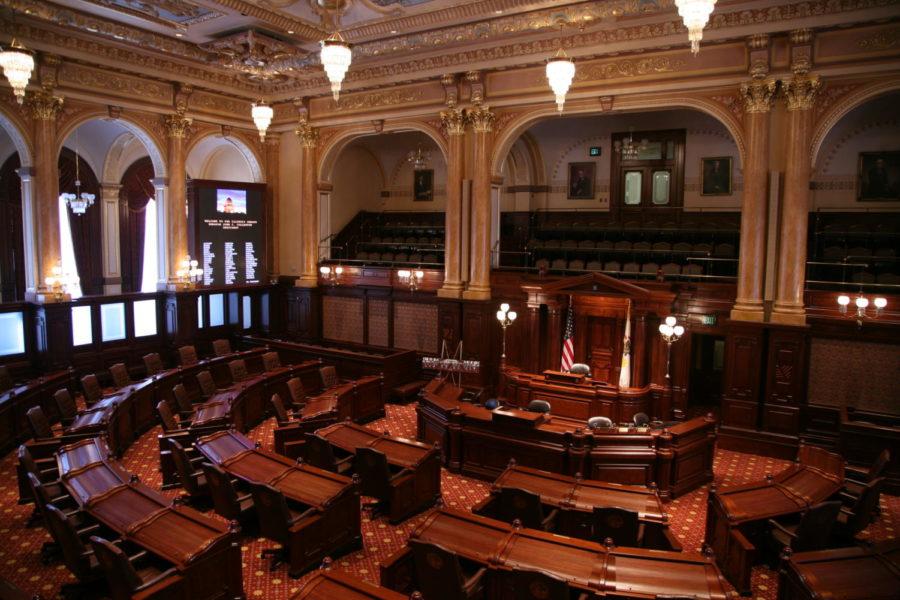New congressional districts proposed by Illinois Democrats would keep Hyde Park split into two congressional districts and give Democrats a significant advantage over Republicans in Illinois’s congressional delegation by creating more districts with majority-democratic voters.
Under the proposed map, Illinois’s first congressional district would continue to cover most of Hyde Park, including the University, while the second congressional district would cover an area east of S. Lake Park Ave. and south of E. 53rd St., as well as east of S. Dorchester Ave. and north of E. 53rd St.
Significant changes to Illinois’s congressional map had to be made after the decennial census found that the state lost population and would only receive 17 seats in the House of Representatives, down from 18 during the previous decade.
“These new proposed congressional boundaries are historic and reflect the great diversity present throughout the state,” said Rep. Lisa Hernandez, Chair of the Illinois House Redistricting Committee. “The proposal ensures minorities, as well as the rest of Illinoisans, have an equitable voice in representation in Washington.”
In Illinois, congressional districts are drafted and passed by the General Assembly then signed into law by the governor. Democrats control both chambers of the Illinois General Assembly and the governorship, making Illinois one of only eight states where Democrats fully control the redistricting process. The new map could give Democrats control of as many as 14 of the state’s 17 seats.
It is the second proposal released by Illinois Democrats after some Democrats expressed a concern that the original proposal split communities of interest—communities likely to have similar policy concerns—and was too aggressive in its partisanship.
In a statement to the Hyde Park Herald, Representative Bobby Rush, who represents most of Hyde Park in Congress, called the original plan an “absolute non-starter” because it fails to “take into consideration cultural affinities.”
Representative Marie Newman, a Democrat currently representing parts of the Southwest Side and the suburbs, criticized the proposal as an effort to curb the power of her current constituents. The previous draft made Newman’s district more competitive, while the current proposal would place Newman in the same district as another Democrat, potentially setting up a primary race against Representative Sean Casten.
"It is abundantly apparent that what has currently been proposed for Illinois’s 3rd Congressional District is not only retrogressive but also substantially diminishes the diverse and progressive voices of Chicago’s Southwest Side and suburbs,” Newman said in a statement to Politico.
In the original proposal, up to three of the seats favoring Democrats were competitive enough to swing Republican in an especially bad election cycle for Democrats. However, after pushback from within the party, Illinois Democrats’ new draft brought the number of competitive districts down to one.
Republicans have been quick to denounce the proposal as a partisan gerrymander, citing oddly-shaped districts and a lack of transparency.
“Illinois Democrats, led by Governor JB Pritzker, have made it clear they are willing to disenfranchise Illinois voters and break repeated campaign promises to do the bidding of Nancy Pelosi and DC power brokers,” said Illinois Republican Party Chair Don Tracy on Twitter. “It’s appalling that fair representation, keeping communities of interest together, and transparency in the mapmaking process in Illinois all had to take a back seat to the demands of national politics.”
BREAKING: IL Dems release HIGHLY gerrymandered congressional redistricting map. ILGOP Chairman response #twill >>
IL Republican Party @ILGOP October 15, 2021
The non-partisan Princeton Gerrymandering Project graded the proposal an ‘F’ overall, with grades of ‘F’ in partisan fairness, geographic features, and competitiveness respectively.
Democrats in the General Assembly plan to hold two public hearings this week to gather feedback on the proposals. The General Assembly now expects to pass new congressional districts before their fall session ends on Thursday.









